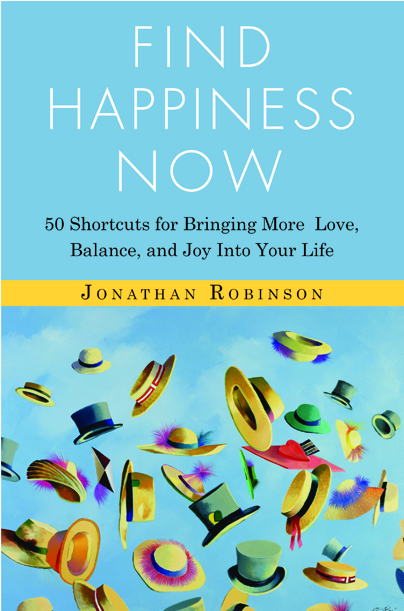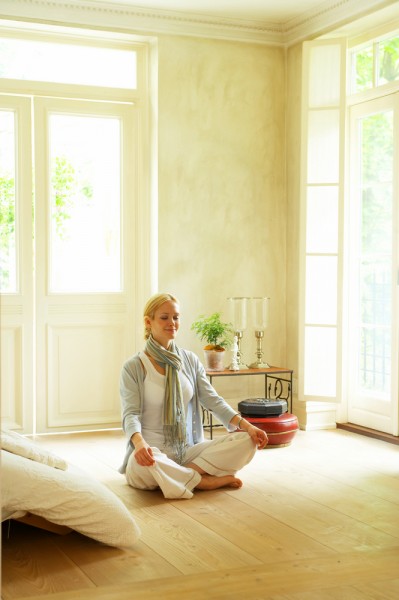 One day I called up my friend, Susan, and asked her how she was. She said, “Things are great. Joe and I just got back from another week long vacation.” I realized that, just about every time I talked to Susan, she had recently gone on vacation. I was a bit annoyed and jealous. “How do you take so many vacations?” I asked. Her reply made me even more annoyed, “We simply make it a priority.” I felt a certain amount of self-pity as I shot back, “Boy, I wish my life was set up so I could take so much time off.” In a compassionate, yet direct manner, Susan replied, “You can if it’s important enough to you. Joe and I just decided we’d take eight weeks off each year. There’s a lot of resistance to doing that, but we’re committed to living the life that we want to live.” Continue reading →
One day I called up my friend, Susan, and asked her how she was. She said, “Things are great. Joe and I just got back from another week long vacation.” I realized that, just about every time I talked to Susan, she had recently gone on vacation. I was a bit annoyed and jealous. “How do you take so many vacations?” I asked. Her reply made me even more annoyed, “We simply make it a priority.” I felt a certain amount of self-pity as I shot back, “Boy, I wish my life was set up so I could take so much time off.” In a compassionate, yet direct manner, Susan replied, “You can if it’s important enough to you. Joe and I just decided we’d take eight weeks off each year. There’s a lot of resistance to doing that, but we’re committed to living the life that we want to live.” Continue reading →
Tag Archives: joy
The Joy of Peak Moments
 Why do people travel half way around the world to visit a place such as Disneyland, pay $125 to get in, and stand in line for an hour for a three minute ride? Because, as human beings, we crave peak moments. The desire for an intense, special, extraordinary experience is one of our deepest desires. That’s one of the major reasons why we like sex, falling in love, winning a big game, and weddings. Yet, peak moments need not be reserved for such major events. You can learn to create them in daily life with people you care about. Once you learn the skill of creating special times for other people, your relationships will never be the same. People will want to know you, do business with you, and even marry you because you know how to create a sense of aliveness wherever you are. There are four key concepts that can help you create more peak moments with your friends, mate, co-workers, and family. Continue reading →
Why do people travel half way around the world to visit a place such as Disneyland, pay $125 to get in, and stand in line for an hour for a three minute ride? Because, as human beings, we crave peak moments. The desire for an intense, special, extraordinary experience is one of our deepest desires. That’s one of the major reasons why we like sex, falling in love, winning a big game, and weddings. Yet, peak moments need not be reserved for such major events. You can learn to create them in daily life with people you care about. Once you learn the skill of creating special times for other people, your relationships will never be the same. People will want to know you, do business with you, and even marry you because you know how to create a sense of aliveness wherever you are. There are four key concepts that can help you create more peak moments with your friends, mate, co-workers, and family. Continue reading →
“Find Happiness Now” My New Book
 While in school, John Lennon of the Beatles was asked by his teacher what he wanted to be when he grew up. He said he wanted to be happy. His teacher told John that he did not really understand the question. John Lennon told his teacher that he did not really understand Life! In fact, what we all really want is to be happy, but we’re taught that happiness comes from being successful—such as having a lot of money. Yet, recent research shows it’s the other way around: success comes from being truly happy. In fact, happy people make over $750,000 more dollars in their lifetime than unhappy people. In addition, they raise happier kids, live 9 years longer, and have half the rate of divorce of the “normal” population.
While in school, John Lennon of the Beatles was asked by his teacher what he wanted to be when he grew up. He said he wanted to be happy. His teacher told John that he did not really understand the question. John Lennon told his teacher that he did not really understand Life! In fact, what we all really want is to be happy, but we’re taught that happiness comes from being successful—such as having a lot of money. Yet, recent research shows it’s the other way around: success comes from being truly happy. In fact, happy people make over $750,000 more dollars in their lifetime than unhappy people. In addition, they raise happier kids, live 9 years longer, and have half the rate of divorce of the “normal” population.
Fortunately, extreme happiness (or joy or fulfillment if you prefer) can be learned—if you know the right secrets. Best of all, it need not take a long time to learn. In my new book, “Find Happiness Now,” I reveal the most powerful and practical methods for creating more happiness in your life. In fact, most of the methods in the book can be done in under 2 minutes a day—yet their effect can change your life.
Many people struggle with stress, anxiety and depression—but they don’t need to. I certainly know about depression. In fact, depression not only runs in my family–it practically gallops! Yet, by interviewing some of the happiest people on Earth (the Dalai Lama, Dr. Wayne Dyer, Deepak Chopra and 35 others), I’ve learned simple ways to go from stressed-out to blissed-out in under a minute. You can too by picking up a copy of “Find Happiness Now.” Don’t put off the happiness you deserve any longer. Instead, Find Happiness Now at Amazon.com or your local bookstore…
How to Create a Deep Intimate Experience with a Loved One
 In my book The Little Book of Big Questions I have a chapter called “The Spiritual Intimacy Experience.” It consists of fifteen questions partners can ask each other in order to develop a deeper connection. I received many letters from people stating that answering these questions with their mate led to the most profound experience of intimacy they had ever had.
In my book The Little Book of Big Questions I have a chapter called “The Spiritual Intimacy Experience.” It consists of fifteen questions partners can ask each other in order to develop a deeper connection. I received many letters from people stating that answering these questions with their mate led to the most profound experience of intimacy they had ever had.
Since Valentine’s Day is coming up, I thought it timely to give you this method for quickly deepening your level of intimacy with a mate or a friend. Continue reading →
Top 10 Tips for Great Sleep…
 I’ve been reading recently about how important a good night’s sleep is for feeling happy during the day and being productive in life. Unfortunately, about 30% of Americans suffer from chronic insomnia and/or sleep deprivation. In our fast paced world, many people try to do with as little sleep as possible, but then end up suffering emotional and health effects from getting too little sleep.
I’ve been reading recently about how important a good night’s sleep is for feeling happy during the day and being productive in life. Unfortunately, about 30% of Americans suffer from chronic insomnia and/or sleep deprivation. In our fast paced world, many people try to do with as little sleep as possible, but then end up suffering emotional and health effects from getting too little sleep.
In order to get a good night’s sleep, I’ve created a simple guide called “Ten Tips for a Good Night’s Sleep.” By following its guidelines, my hope is that you’ll experience a better quality of sleep each night, as well as more productive and happier days due to having rested well. Feel free to forward this on to people you care about who might want to improve their quality of sleep. By resting well each night, you’ll be in good shape to handle whatever life throws at you….
Ten Tips for a Good Night’s Sleep:
- Make your bedroom conducive to sleep: people sleep best in cool, dark, and quiet environments. Use a sleep mask or whatever is necessary to create as dark a room as possible.
- Create a sleep inducing routine: try taking a bath or shower before bed, or read a book, or some other non-stressful activity before going to bed.
- Avoid alcohol, caffeine, nicotine and energy drinks: caffeine can keep you awake even 6 to 8 hours after it’s ingested, so be especially careful about “hidden” caffeine in soda, chocolate, tea, and pain relievers.
- Know how to use the light at night: if possible, avoid highly lit screens an hour before going to bed, such as looking at a computer screen. If you read before going to bed, make the light a little dim.
- Keep a consistent sleep schedule: people sleep better when they go to sleep and wake up at roughly the same time each night and day. Try to sleep an amount of hours that truly works for you (8 is recommended).
- Nap before 5pm, or not at all: if you like naps, try taking a nap for less than 30 minutes, and make it before 5pm. If you still have trouble falling or staying asleep, try not napping and see how that affects your sleep.
- Don’t eat a big evening meal: finish dinner several hours before you go to sleep, don’t eat anything an hour before bedtime, and avoid foods that can cause indigestion.
- Exercise early in the day: While exercise during the day helps people to have a good night’s sleep, don’t exercise at least 3 hours before going to bed.
- Explore ways to quiet your mind: you can’t quickly stop a fast moving car; nor can you quickly stop a fast moving mind. Therefore, have a way of relaxing and dealing with stress during your day—before your mind builds up too much momentum.
- Avoid stimulating movies or TV before bed: Emotionally intense movies or shows can make it very hard to fall asleep for a couple of hours afterwards. Therefore, avoid such stimulation at least an hour before going to bed..
..and a Bonus Tip: Use what seems to work for you through trial and error: this can include supplements such as melatonin or “Midnite or Valerian, or things specific to you.
How to Pray Without Ceasing
 With Thanksgiving upon us, I thought it was a good idea to blog about giving thanks and the power of gratitude. In my book The Experience of God, I asked each of the forty well-known spiritual leaders I interviewed about their favorite method of feeling closer to their Creator. While the range of responses was surprising, the answer I heard more than any other was that of focusing on feeling grateful to God throughout the day. As Ram Dass put it, “Gratitude opens your heart, and opening your heart is a wonderful and easy way for God to slip in.”
With Thanksgiving upon us, I thought it was a good idea to blog about giving thanks and the power of gratitude. In my book The Experience of God, I asked each of the forty well-known spiritual leaders I interviewed about their favorite method of feeling closer to their Creator. While the range of responses was surprising, the answer I heard more than any other was that of focusing on feeling grateful to God throughout the day. As Ram Dass put it, “Gratitude opens your heart, and opening your heart is a wonderful and easy way for God to slip in.”
In Western culture, we often think of prayer as asking God for something. Yet, in many spiritual traditions, prayer is primarily considered a way of thanking God for the blessings in one’s life. Many years ago, I received an important lesson about “thankfulness prayer” from a Native American medicine man named Bear. As a condition of being interviewed about his life, Bear requested we meet at a location sacred to his tribe. Once there, he suggested that both of us begin by offering up a prayer to the Great Spirit. My simple prayer was that our time together be well spent, and that it would serve our becoming closer to God. The bear began his prayer in his native tongue, as I listened patiently. After ten minutes of listening to the sounds of his tribal language, I began getting impatient. After twenty minutes of listening to his prayer, I was secretly irritated. While I grew restless, Bear looked like he was soaring as high as the eagles that flew overhead. Finally, after fifty minutes, Bear finished speaking his words of prayer.
Trying to hide my sense of irritation, I began my interview by asking Bear, “What did you pray for?” Bear’s calm reply was, “In my tribe, we don’t pray for anything. We give thanks for all that the Great Spirit has given us. In my prayers, I simply thanked Spirit for everything I can see around me. I gave thanks to each and every tree I can see from here, each rock, each squirrel, the sun, the clouds, my legs, my arms, each bird that flew by, each breath I took, until I was finally in full alignment with the Great Spirit.” It was clear to me that this man really knew how to pray.
 From Bear’s inspiration and the wisdom of many others
From Bear’s inspiration and the wisdom of many others
I’ve interviewed, I began trying this new method of prayer. To make this form of prayer in my daily life, I began by simply saying, “Thank you God for (whatever is in my awareness).” Sometimes I would “prime the pump” by first thanking God for things that are easy for me to feel grateful for. For example, I might say, “Thank you for my health. Thank you for such a beautiful day. Thank you for my wonderful wife.” Then, once I truly felt a sense of gratitude in my heart, I would use “thank you” as a “mantra” for whatever I was currently aware of. For instance, if I was driving somewhere I might say, “Thank you for my car, thank you for my Iphone, thank you for this beautiful music, thank you for this nicely paved road, thank you for the man that just cut me off, thank you for the anger that he stirred up in me, thank you for the opportunity to practice forgiveness.”
The secret of this technique is to see all things as gifts given to us by God to enjoy or learn from. Normally, we take virtually everything for granted, and rarely stop to appreciate the wonderful things we are given. It can be eye opening to realize that even middle class folks of today live better than Kings lived just 100 years ago. Yet, without the “thank you technique,” all the amenities of modern day life can go unappreciated.
 Once you have used this method for awhile, you can even use it to begin to value things that are unpleasant. In the example above, getting cut off by an aggressive driver was not my idea of a good time. Yet, if I’m doing my “thank you” mantra, I’m more likely to see how such an event can serve me. From a higher state of mind, I can see that this driver is helping me learn patience, compassion, and forgiveness—three things I’m not very good at. Fortunately, there are many drivers and people who are willing to help me learn this lesson! Thank you God for all that help.
Once you have used this method for awhile, you can even use it to begin to value things that are unpleasant. In the example above, getting cut off by an aggressive driver was not my idea of a good time. Yet, if I’m doing my “thank you” mantra, I’m more likely to see how such an event can serve me. From a higher state of mind, I can see that this driver is helping me learn patience, compassion, and forgiveness—three things I’m not very good at. Fortunately, there are many drivers and people who are willing to help me learn this lesson! Thank you God for all that help.
Like any mantra or phrase that a person repeats, repeatedly saying “thank you” can build up a momentum of its own as you use it throughout the day. However, it’s important that it doesn’t become a mechanical mental exercise. With each thank you that is thought, it’s essential to feel a sense of appreciation in your heart for the gift you’ve been given. Besides helping a person tune into an ecstatic feeling of gratitude, this method can also help a person become more aware and present in the eternal now.
Letting Happiness In
 I recently took an online course called “Awakening Joy.” It was quite good, maybe even as good as my own online course called “Deeper Happiness.”(Of course, it did cost five times as much as my course!) Even though it was expensive, it was worth it to me because I learned something valuable. What I learned from this course was really just one new thing — which I plan to share with you in a moment. Yet, even if you learn just one new thing from a course or a workshop, it is still very much worth it. After all, that one new “thing” will potentially be able to affect you for the rest of your life. If something you learn ends up having practical value to you for the rest of your life, then its value is priceless.
I recently took an online course called “Awakening Joy.” It was quite good, maybe even as good as my own online course called “Deeper Happiness.”(Of course, it did cost five times as much as my course!) Even though it was expensive, it was worth it to me because I learned something valuable. What I learned from this course was really just one new thing — which I plan to share with you in a moment. Yet, even if you learn just one new thing from a course or a workshop, it is still very much worth it. After all, that one new “thing” will potentially be able to affect you for the rest of your life. If something you learn ends up having practical value to you for the rest of your life, then its value is priceless.
What I learned from the Awakening Joy course was the importance of allowing time for positive moments in one’s life. Being that I am a so-called “happiness expert,” I already knew the importance of allowing time for positive feelings. Yet, as I watched myself throughout the day, I noticed something interesting. In the midst of sweet moments or intimate moments with a friend—or simply moments of deep peace—I would often think of what I have to do next on my “to do” list. Then, I would curtail my joyful experience and do whatever I felt compelled to do. After watching this a few times, I realized I was ripping myself off from experiencing more truly joyful moments.
 For example, today I was playing with my dog and we were both having a great time. Then, when she was done with playing, she came over to cuddle with me in my lap. We cuddled for a moment, and I enjoyed the feeling of petting her and feeling my deep love for her. Then after a minute, I had the thought, “What do I need to do next?” Of course, my “list” is never done, so there were plenty of things to do, but why did I need to curtail such a sweet moment so quickly? In fact, I did not have to, but I realized I have been trained by our culture to always be productive—even at the expense of hanging out with more moments of love, intimacy, and joy. Can you relate to this?
For example, today I was playing with my dog and we were both having a great time. Then, when she was done with playing, she came over to cuddle with me in my lap. We cuddled for a moment, and I enjoyed the feeling of petting her and feeling my deep love for her. Then after a minute, I had the thought, “What do I need to do next?” Of course, my “list” is never done, so there were plenty of things to do, but why did I need to curtail such a sweet moment so quickly? In fact, I did not have to, but I realized I have been trained by our culture to always be productive—even at the expense of hanging out with more moments of love, intimacy, and joy. Can you relate to this?
Author Gay Hendricks calls this phenomenon the “Upper Limit Problem”
When we are feeling good, we often will stop what we are feeling and look for some problem or distraction to occupy our mind and emotions. It is as if we have an internal thermostat ready to kick in with negativity or worry anytime our internal temperature (positive feelings) get too high. As a psychotherapist, I have noticed this phenomenon in couples that sabotage a relationship when it is going really well, or people who sabotage a business just when they are starting to make a lot of money. Yet, once I saw how it manifested in the little moments of my daily life, I knew it was important to watch out for.
 So having seen my own tendency to start thinking of my “to do” list in the midst of positive emotions, I have taken steps to go against it. Nowadays, when I see that I am curtailing a sweet and/or intimate moment, I try instead to stay with my positive experience. I take a deep breath and remind myself; nothing is more important than joyful moments. I attempt to “hang out” with such feelings until they naturally drift away.
So having seen my own tendency to start thinking of my “to do” list in the midst of positive emotions, I have taken steps to go against it. Nowadays, when I see that I am curtailing a sweet and/or intimate moment, I try instead to stay with my positive experience. I take a deep breath and remind myself; nothing is more important than joyful moments. I attempt to “hang out” with such feelings until they naturally drift away.
This simple little practice has added immensely to the quantity of joyful moments I have in my life. If you can relate to my experience, then I challenge you to allow more time for your own positive feelings. Notice what you do to curtail such moments, and once you “catch” yourself in the act, take a deep breath and allow yourself to simply BE. Your partner, your pets, and your joyful heart will thank me…
How to Easily Overcome Disturbing Memories
 Do bad memories or images ever haunt you? Do you sometimes flash back to some of the most traumatic moments of your past? For some reason, the human mind has a nasty tendency to forget important things like your mother’s birthday, but is more than happy to frequently remind you of the worst events of your life. Fortunately, there’s an antidote to this glitch in the human bio-computer. It’s called the Erasure Technique. In a matter of a few minutes, this powerful method can virtually neutralize the bad feelings associated with almost anything you’ve ever experienced. I’ve even used it with clients who have suffered from disturbing memories for many years. Whether you want to neutralize images of a minor car accident or the hurt from the ending of a relationship, the erasure technique can make a dramatic difference in your life. Continue reading →
Do bad memories or images ever haunt you? Do you sometimes flash back to some of the most traumatic moments of your past? For some reason, the human mind has a nasty tendency to forget important things like your mother’s birthday, but is more than happy to frequently remind you of the worst events of your life. Fortunately, there’s an antidote to this glitch in the human bio-computer. It’s called the Erasure Technique. In a matter of a few minutes, this powerful method can virtually neutralize the bad feelings associated with almost anything you’ve ever experienced. I’ve even used it with clients who have suffered from disturbing memories for many years. Whether you want to neutralize images of a minor car accident or the hurt from the ending of a relationship, the erasure technique can make a dramatic difference in your life. Continue reading →
How to Let Go of Negative Emotions
 When clients come into my office, they describe many types of problems. Yet, whatever their situation, they almost always complain that they feel stuck in feelings of anger, sadness, fear or hurt. In order to help my clients, I teach them something called The Sensation Meditation (SM). This meditation guides people to focus on their negative feelings in a specific manner. By helping people fully feel their emotions without distraction, this meditation helps people move through “stuck” feelings into a place of healing. When people finish using this simple three minute technique, they frequently report that their negative feelings have vanished, and that their body feels relaxed, peaceful, and at ease.
When clients come into my office, they describe many types of problems. Yet, whatever their situation, they almost always complain that they feel stuck in feelings of anger, sadness, fear or hurt. In order to help my clients, I teach them something called The Sensation Meditation (SM). This meditation guides people to focus on their negative feelings in a specific manner. By helping people fully feel their emotions without distraction, this meditation helps people move through “stuck” feelings into a place of healing. When people finish using this simple three minute technique, they frequently report that their negative feelings have vanished, and that their body feels relaxed, peaceful, and at ease.
The first step in doing the Sensation Meditation is to find a comfortable chair or couch, and proceed to take a couple of slow, deep breaths. Then, scan your body and notice the most uncomfortable feeling or sensation you feel. Focus on this area of your body, and feel exactly whatever is there. For example, if you’re annoyed you might notice a tightness in your chest and a warm feeling in your throat. If you’re worried, you may notice a tension in your forehead muscles and shoulder blades. Ultimately, our emotions are experienced in our body as specific sensations such as warmth or coolness, tightness or relaxation, sharp or blunt, etc. As you notice uncomfortable sensations in your body, try to be aware of the resistance you have to experience these uncomfortable feelings. Instead of avoiding or pushing away the discomfort you feel, simply allow the sensations to be there. Give yourself full permission to feel whatever is going on in the present moment. Continue reading →
How to Grow Your Self Esteem
 In the movie Snow White, the queen asks her mirror who is the “fairest one of all.” The mirror breaks the bad news to her that there is someone much more beautiful than she. Like the queen, most of us have bought the idea that we are not as beautiful, worthy of love, or as good as someone else. Capitalizing on our insecurities and lack of self-worth, advertisers tell us that if we were only richer or more beautiful, we’d be loved. Although we may know better in theory, it’s easy to fall into the trap of trying to gain recognition from others as a substitute for our lack of self-love. Yet, there is no substitute for really liking yourself. Even if the whole world applauds you, if you don’t feel good about yourself, it doesn’t matter. Unfortunately, the sad truth is that most people don’t feel good about themselves. Therefore, what’s needed is a practical and powerful way to grow our sense of self-worth. Fortunately, there is a method that can greatly nurture and enhance a person’s sense of self esteem. I call it the Mirror Exercise (ME).
In the movie Snow White, the queen asks her mirror who is the “fairest one of all.” The mirror breaks the bad news to her that there is someone much more beautiful than she. Like the queen, most of us have bought the idea that we are not as beautiful, worthy of love, or as good as someone else. Capitalizing on our insecurities and lack of self-worth, advertisers tell us that if we were only richer or more beautiful, we’d be loved. Although we may know better in theory, it’s easy to fall into the trap of trying to gain recognition from others as a substitute for our lack of self-love. Yet, there is no substitute for really liking yourself. Even if the whole world applauds you, if you don’t feel good about yourself, it doesn’t matter. Unfortunately, the sad truth is that most people don’t feel good about themselves. Therefore, what’s needed is a practical and powerful way to grow our sense of self-worth. Fortunately, there is a method that can greatly nurture and enhance a person’s sense of self esteem. I call it the Mirror Exercise (ME).
To do the Mirror Exercise, simply go to a mirror, (or find a hand held one), and look yourself in the eyes. Notice what thoughts or feelings come up for you. Then, begin talking to yourself out loud, as if you were talking to a really good friend. Tell the person in the mirror how much you care and appreciate him or her. Acknowledge what you’re proud of. Say things that the person in the mirror needs to hear in order to feel accepted and cared for. Imagine that you’re talking to a young, vulnerable child who needs to be encouraged. Here’s what your “conversation” might sound like:
“Hello Jonathan. How are you?
You’ve been  feeling pretty stressed lately, haven’t you? Well, you’ve been busy helping a lot of people. You need to remember to take care of yourself. You deserve it. You’ve worked hard. It’s amazing all the tasks you do. I’m proud of the fact that you’ve become a very giving person over the years. I appreciate how you’re really committed to helping others. I like you. You’re often a lot of fun to be with. Some of the stories you said last night at the party were really funny. I appreciate your sense of humor. You don’t have to try so hard to be liked—because you are liked. Not for what you do, but for who you are. I want you to know that you’re doing just fine. Allow yourself to relax more and just receive all the goodwill people feel towards you. I respect who you are, and I want you to know I love you.”
feeling pretty stressed lately, haven’t you? Well, you’ve been busy helping a lot of people. You need to remember to take care of yourself. You deserve it. You’ve worked hard. It’s amazing all the tasks you do. I’m proud of the fact that you’ve become a very giving person over the years. I appreciate how you’re really committed to helping others. I like you. You’re often a lot of fun to be with. Some of the stories you said last night at the party were really funny. I appreciate your sense of humor. You don’t have to try so hard to be liked—because you are liked. Not for what you do, but for who you are. I want you to know that you’re doing just fine. Allow yourself to relax more and just receive all the goodwill people feel towards you. I respect who you are, and I want you to know I love you.”
Although there is no formula for what to say during this exercise, it’s helpful if you steer clear of put-downs. If you notice you begin to think of negative judgments during the ME, tell those thoughts, “Thank you for sharing, but right now I’m committed to loving myself.” You may find this exercise difficult to do at first, but it becomes easier with practice. It’s common for negative thoughts to arise, especially when you are complementing yourself. As you practice this exercise, you’ll notice that the self-criticisms fade more into the background, and the self-appreciations are taken in at a deeper level. After awhile, you’ll begin to feel a deep love and compassion for the person in the mirror.
There are many variations to the basic ME that can be tried for different effects.
 For example, you may try to do this exercise completely naked in front of a full-length mirror. Most people are at war with their bodies, but the ME can help. By starting with specific parts of your body that you like, you can eventually get to accept every part of your anatomy. During this form of the Mirror Exercise, talk to the various parts of your body and try to develop a better relationship with them. For example, you might say, “Hello nose. As you know, you’re bigger than I would like you to be, but I am grateful for all the wonderful smells you send my way. I’m going to try to appreciate you more. You really do a great job. Thank you for adding to my life.”
For example, you may try to do this exercise completely naked in front of a full-length mirror. Most people are at war with their bodies, but the ME can help. By starting with specific parts of your body that you like, you can eventually get to accept every part of your anatomy. During this form of the Mirror Exercise, talk to the various parts of your body and try to develop a better relationship with them. For example, you might say, “Hello nose. As you know, you’re bigger than I would like you to be, but I am grateful for all the wonderful smells you send my way. I’m going to try to appreciate you more. You really do a great job. Thank you for adding to my life.”
If you have favorite affirmations you use for your growth, telling them while you look in the mirror is a way to “turbo-charge” their effect on you. The simple affirmation, “I am committed to loving you and taking care of you” is a powerful statement to say to yourself. Because the Mirror Exercise is so effective, there is often a lot of resistance to doing it. You may feel squeamish, silly, or stupid at first. In general, feelings of embarrassment or resistance are all signs that you could greatly benefit from this method. At first, the ME can bring to the surface how difficult it is for you to feel or express love for yourself. Yet with practice, those initial feelings of armoring will get peeled off like layers of an onion. You’ll soon be left with a loving relationship with yourself. When you look into the mirror, you’ll no longer hear a critical voice saying how you’re not good enough. Instead, you’ll appreciate that you are an absolutely perfect rendition of yourself.

